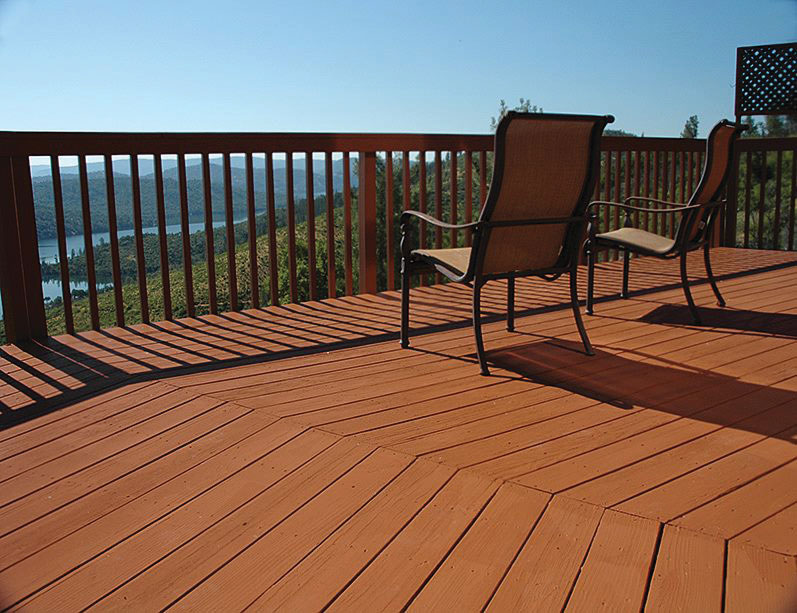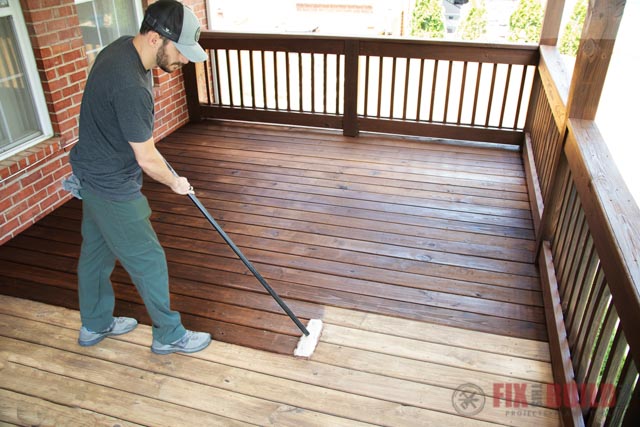A Comprehensive Guide to Different Kinds of Deck Discoloration Techniques for Ultimate Security and Visual Appeals
In the world of deck upkeep, the art of tarnishing stands as a crucial action towards both preserving the stability of your outside area and improving its aesthetic charm. As we browse via the detailed globe of deck discoloration strategies, one starts to value the nuanced approaches that can make all the difference between a mediocre coating and a remarkable one. From the option of the ideal tarnish kind to the careful application techniques, each element plays an important function in accomplishing that ideal balance in between security and appearances. Join us as we reveal the keys behind accomplishing the supreme deck staining results-- a trip where every brushstroke shapes not just the surface, yet the extremely essence of your outdoor refuge.
Comprehending Different Kinds Of Stains
Numerous sorts of spots are typically used in the procedure of deck staining to accomplish various aesthetic and safety impacts. Clear stains are ideal for showcasing the natural grain of the timber while offering marginal security versus UV rays and moisture. On the various other hand, semi-transparent discolorations provide an equilibrium between shade improvement and protection, permitting some wood grain to show via. For a more opaque coating that provides optimum defense against the aspects, strong stains are the recommended choice. These spots can be found in a variety of shades and successfully hide the timber grain.
In addition, there are additionally specialized stains such as sealers and toners. Toners add a tip of shade to the timber while giving minimal protection, making them appropriate for more recent decks with much less wear. Sealants, on the various other hand, deal protection against moisture and UV rays without adding shade, making them a preferred selection for decks that currently flaunt a preferable hue. Understanding the attributes and advantages of each kind of tarnish is crucial for achieving the desired look and toughness for your deck.
Choosing the Right Discoloration Shade
When thinking about the appearances of your deck discoloration job, the choice of stain shade plays a critical duty in improving the protective qualities of the picked discolor type (Beautiful Deck). The color you pick can dramatically affect the overall appearance of your deck, along with its capability to withstand the elements with time
When picking a discolor color, it's essential to take into consideration the existing color scheme of your home's outside. Balancing the deck tarnish with the overall visual of your property can produce a aesthetically appealing and natural outdoor area. Additionally, the shade of your deck stain can affect the temperature of the deck surface area; darker colors often tend to absorb even more heat, while lighter colors mirror sunlight and remain cooler.
Moreover, the sort of timber you are discoloring will likewise affect just how the discolor color shows up. Different timber types can interact with the tarnish in different means, possibly changing the last shade. It's suggested to test the discolor on a small, unnoticeable area of the deck to guarantee the shade turns out as desired prior to continuing with the entire task.
Preparing Your Deck for Staining
To ensure a successful and long-lasting deck discoloration task, thorough preparation of the deck surface area is essential. Begin by cleaning the deck extensively to get rid of dust, gunk, mildew, and any old stain or finish.
Check the deck for any type of harmed or rotten boards that need to be replaced. Hammer down any sticking out nails and sand any kind of rough areas to ensure a smooth surface for discoloration. Inspect for any type of loose barriers or actions that may need tightening up or repair service.
When the deck is tidy, completely dry, and in great repair, take into consideration using a wood brightener to restore the deck's all-natural shade and open the wood pores for better tarnish penetration. Ultimately, secure any type of nearby plants, furnishings, or surfaces with plastic sheeting prior to waging the staining procedure. Proper prep work is crucial to accomplishing a professional-looking finish and you could check here making best use of the long life of your deck tarnish.
Applying Stain With Various Strategies
For a expert and flawless coating, the technique of applying discolor plays a critical function in improving the look and toughness of your deck. There are several methods you can use to ensure an effective application of stain.
It is optimal for detailed areas and reaching between deck boards. Back-brushing after rolling is suggested to also out the tarnish and function it right into the timber for much better infiltration.
Splashing is one more popular strategy, using speed and convenience of application, particularly for large deck locations. Whichever method you choose, making certain appropriate here are the findings preparation and following supplier standards will certainly assist accomplish a long-lasting and attractive tarnish finish on your deck.

Keeping and Re-staining Your Deck
When it comes to re-staining your deck, the regularity depends on different factors such as the kind of stain made use of, the environment in your area, and just how much wear and tear your deck experiences. Usually, it is advised to re-stain your deck every 2-4 years to preserve its protection and aesthetics.
Prior to re-staining, make sure the deck is tidy, dry, and totally free of any kind of previous stain residue. Select a high-grade stain that suits your deck's material and supplies the wanted degree of protection.
Conclusion
In final thought, recognizing the various sorts of deck stains, selecting the ideal shade, effectively preparing the deck, using stain with various techniques, and preserving and re-staining the deck are essential steps for supreme security and visual appeals. By following these steps, you can guarantee that your deck stays in leading problem for several years ahead.
Additionally, the color of your deck discolor can affect the temperature level of the deck surface; darker shades often tend to soak up more warmth, while lighter shades reflect sunlight and stay cooler.
It's suggested to evaluate the discolor on a little, unnoticeable area of the deck to make certain the color transforms out as wanted prior to proceeding with the whole task.
